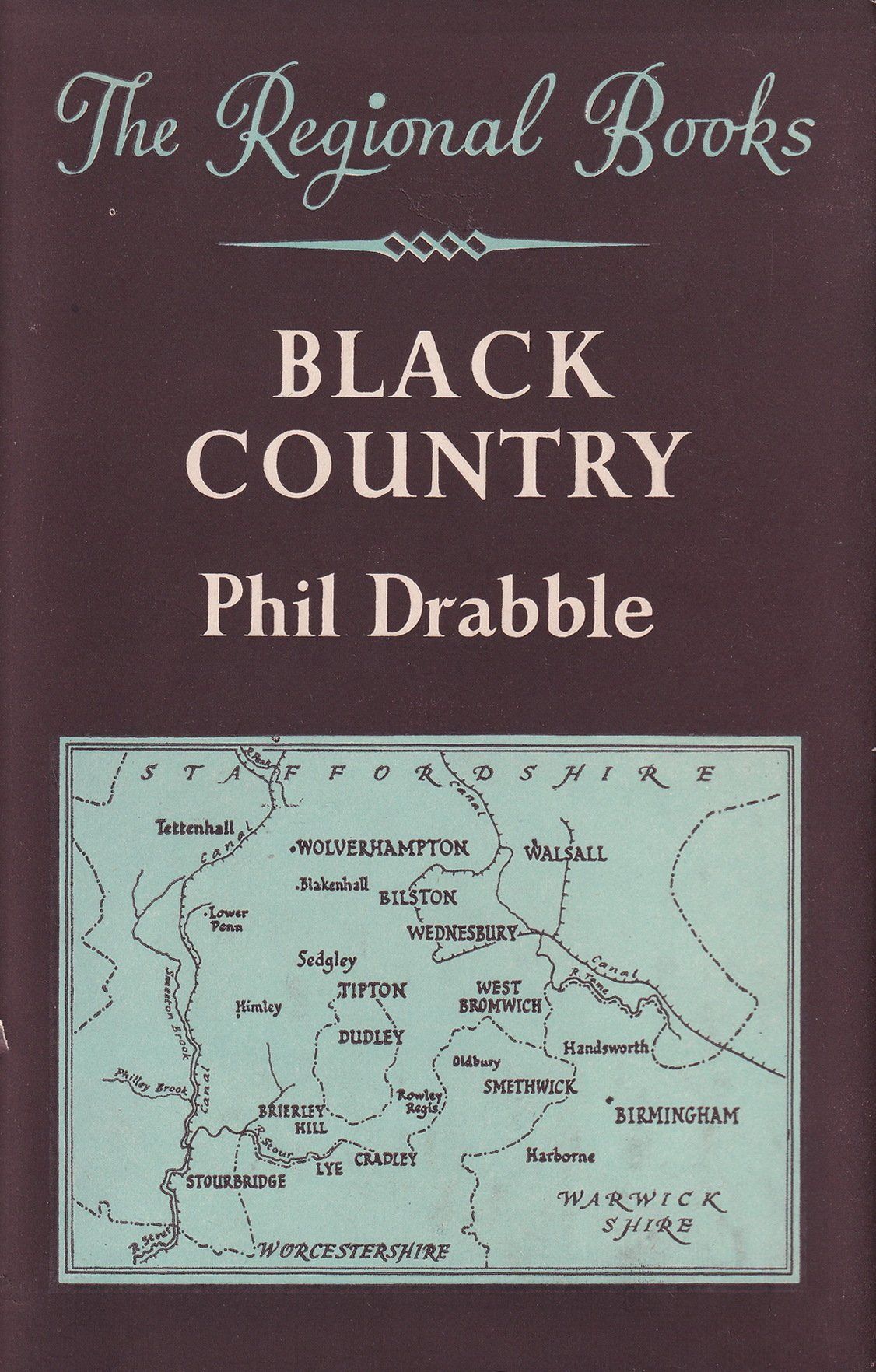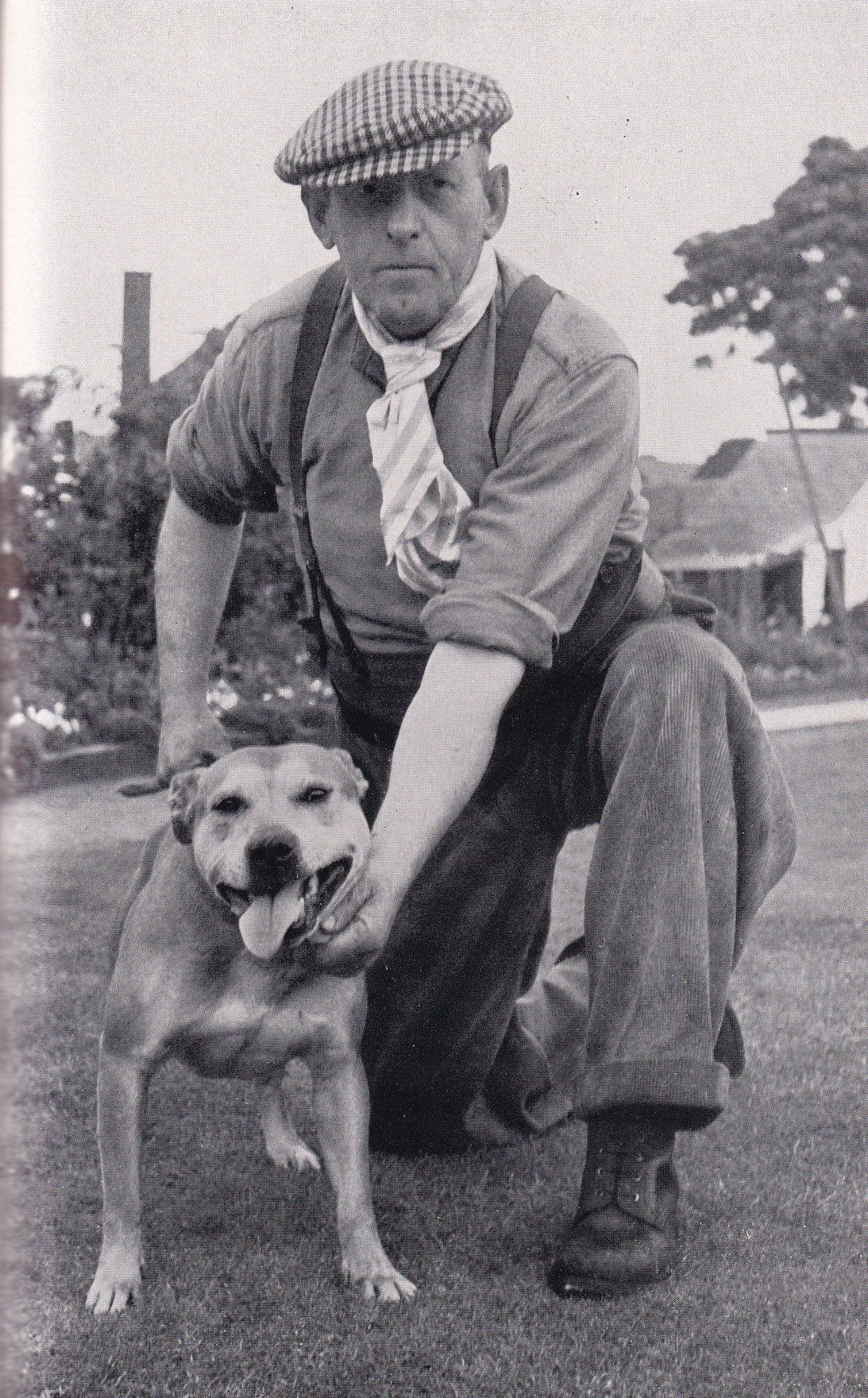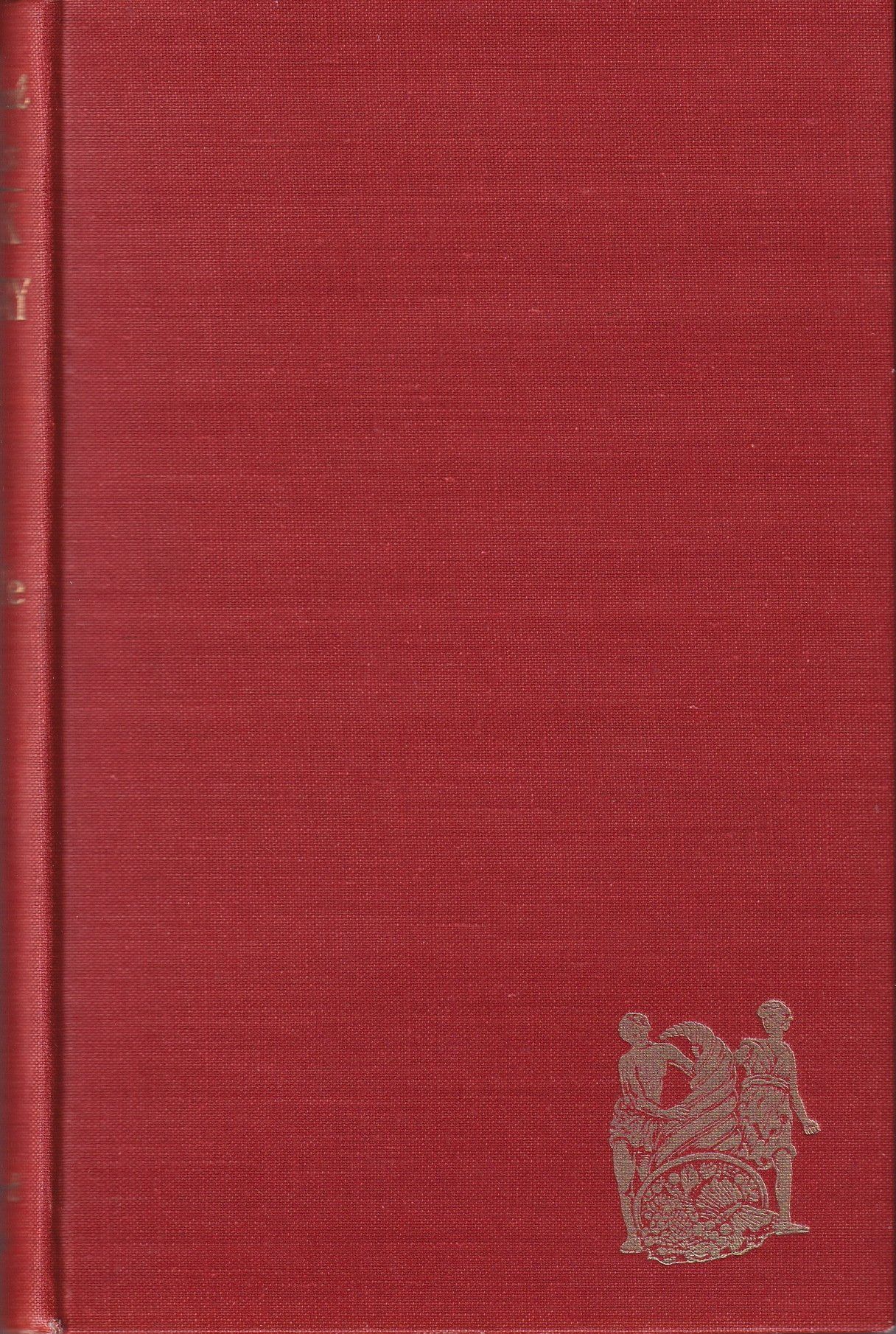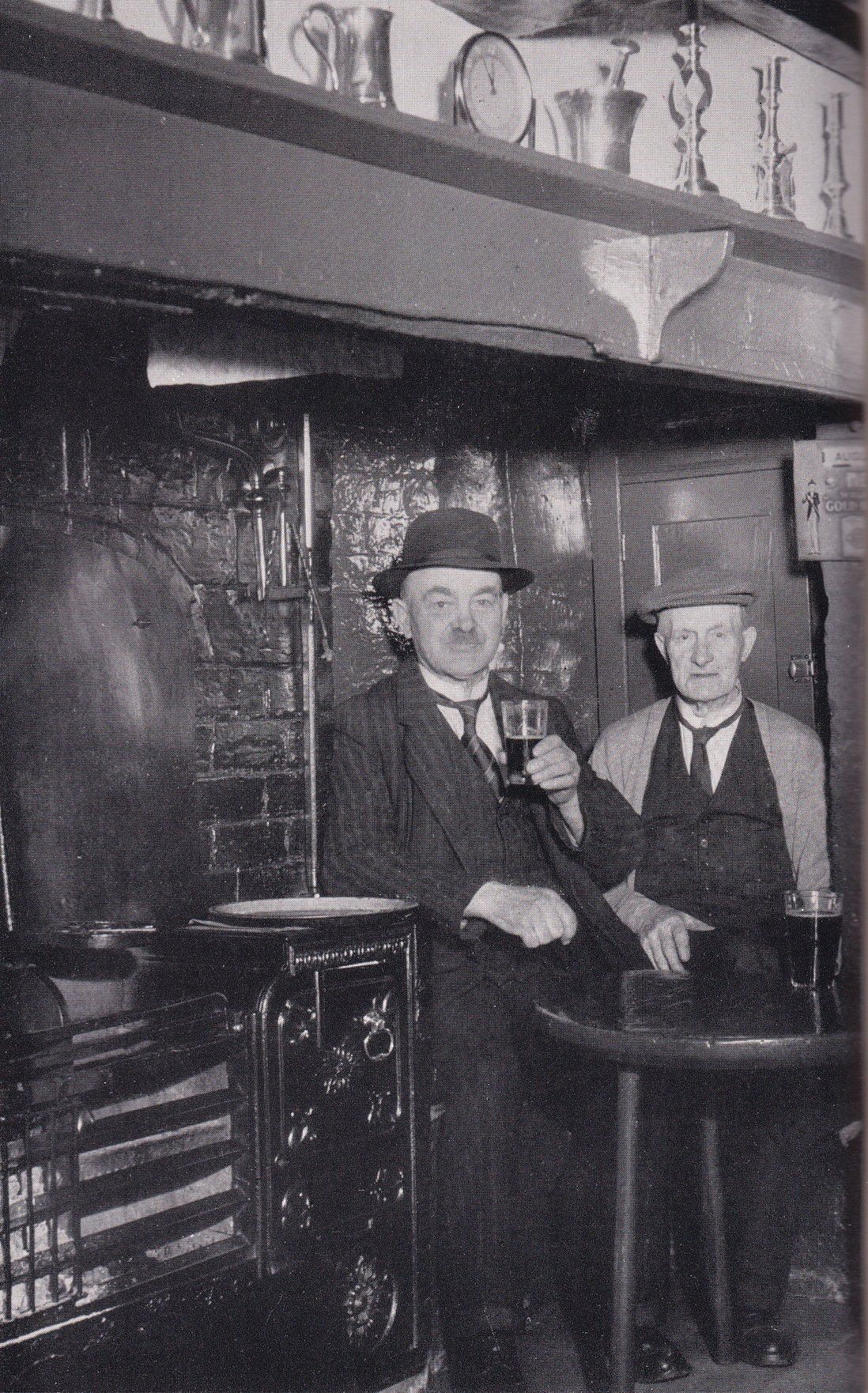First Published: 1952
1st published by:- Robert Hale Ltd, London, 1952
“The County Books”
Hardcover 252 pages with dustjacket
size 22.3cm x 14.6cm x 2.3cm approx
weight 485g approx.
Edited by Brian Vesey-Fitzgerald, F.L.S.
MADE AND PRINTED IN GREAT BRITAIN BY WILLIAM CLOWES AND SONS, LIMITED LONDON AND BECCLES
Book Description:
HERE, traced from prehistoric times to the present day, is the story of one of the most vital regions in our country. It is, throughout, a personal book, and the author feels strongly about what he writes. Born and bred in the Black Country, he has spent the last twelve years in typical Black Country industry. His friends are the "little men". He knows their homes and their pubs; he goes with them to work and joins them in their sports; he climbs their hills and descends into their mines. He finds contrast and change, and he feels it important to record what there is before it is too late.
Mr. Drabble makes no attempt to avoid the unpleasant issues so commonly glossed over; but the reader will also find natural history, dialect and custom, ballads and food, and, above all, delightful people. Black Country folk, the author feels, were refined in the fire of the Industrial Revolution. Those were the days when only the fittest survived, and they sired the vivid individualists who followed.
Although he depicts the district's rise to fame and prosperity, Mr. Drabble in no way minimizes the subsequent decline. Perhaps most important of all, however, is his faith in a better and more hopeful future.
CONTENTS:
ACKNOWLEDGMENTS
PREFACE
TERRAIN
ANCIENT DAYS
FOUNDATIONS
GROWTH
THE PRICE
FAME
DECLINE
PEOPLE
HOPE
BIBLIOGRAPHY
GLOSSARY
INDEX
ACKNOWLEDGMENTS
It is impossible to mention by name the innumerable Black Country folk who have shown me unstinting kindness and patience in my search for material for this book.
Employers have made me free to come and go in their works as I liked; craftsmen have shown me the secrets of their skill; sportsmen have laid bare the mysteries of their arts. I have been made welcome in cottage and pub and mansion alike, receiving in each the hospitality for which the district is peerless. I have wandered at will over the countrysideonly occasionally without permission-and everywhere I have met with limitless help.
To everyone who has made my task easier, therefore, I offer my sincerest gratitude.
PREFACE
THERE is no purpose in denying that the Black Country is fast becoming no more than a memory. For one thing, it is no longer black. And despite the boasting of reformers, it is not legislation which has caused the change, but powers far greater: the use of electricity instead of steam, advances in blast-furnace design and working-out of the coal and iron deposits.
The people and their habits are changing too, and legislation can take more credit for that-or blame. It is becoming harder to find the individualists of a generation ago. Cockfighting and dogfighting have practically ceased. Whippet racing has largely been supplanted by the greyhound track; pub games' have given way to radio. The nearest folk. get to taking any active part in sport is to fill in a weekly football coupon. Worse still, mass production is supplanting craftsmanship.
I make no apology, therefore, for my interest in Little Men: the chaps whose forebears brought world fame to the district. I number amongst them many of my most valued friends, and I offer them my gratitude for consenting to appear in print. They are the folk. over whom historians have largely glossed. Their sports in the main were rough and cruel. Their work was skilled and hard; and it has been fashionable in the past to pretend ignorance of the conditions in which they had to live. Their dialect was venerable but unsung; and their womenfolk served miracles of food with the minimum of outlay.
Soon they will be gone. It has been my object, in this book, to leave some record of their passing. To show that the Black Country was black only for a space and that her sons held fast to tradition in a world of change. If they can outlive this modern, race for speed, there is hope in the future that it may be they who will restore our topsy-turvy values and set Quality on her pinnacle once more.
ILLUSTRATIONS
"Shadows blot out half the sky." Steel at Bilston
"The chief landmarks are power stations. Walsall
"The view from Darby's Hill"
"There is a jagged rift in the skyline of hills." Rowley
"Here is a real old pub" The Dog and Partridge, Wednesfield
Fighting cock lectern, Wednesbury Church
"Humdrum farm buildings have lancet windows." Halesowen Abbey
Halesowen Church
"The fabric is ancient sandstone." St Kenelm's Church
The Continental gaiety of Walsall Market
Weekend at Wolverhampton "The clay lay close at hand." Clay-mine near Stourbridge
Oakhouse, West Bromwich
Typical "swag" caused by subsidence
"One caressed the tortured coils." Springs at West Bromwich
Wrens Nest caves. Dudley
"Blue Billy may vanish completely." Oldbury
"This sprawling laboratory." Oldbury Chemical Works
"Beautiful Cradley Spa." Saltwells Cradley
A chainmaker 'ondles" a Stafford bull terrier
The old windmill at Ruiton
"The aspect of the district is changing." One of the last conical glasshouses near Stourbridge
"The most skilled is the glassmaker." Brierley Hill
24 "Like Shadrach of old." Changing a pot in the glasshouse
25 Most extraordinary of all is the "gaffer". Frank Ringrose at 88
Book Extract
“I mentioned that one of the sights of the Wake were the be-ribboned bull terriers, grunting gruff challenges at all the doggy world. They were, and indeed still are, an extremely important facet of life in these parts, and did we ever decide to adopt a crest, nothing could be more appropriate than a Stafford Rampant. The breed had its birth just as the district was becoming really famous. Bull-baiting was dying out by about 1835 and its votaries searched round for a less conspicuous sport. The old bulldogs were as willing to tackle each other as they were to ball a bull. But they were a little too slow and cloddy to be really spectacular. Our miners and ironworkers have always been almost superstitiously allergic to anything approaching in-breeding, and they needed little or no encouragement to mate their bulldogs to almost anything aggressive.
The most popular cross was with various forms of terrier, and the "bull-and-terrier" produced combined the strength and courage of the bulldog with the dash and gaiety of the terrier---or a lot of them did. Those were days of the survival of the fittest and any which didn't prove game were ruthlessly destroyed. The best of these old "bull-and-terriers" loved nothing in the world so much as dog-fight. When once they laid hold they hung on with all the grimness of a bulldog, only changing their hold when they got the opportunity of a better. And all the time they shook and shook (or "worked"), tearing their adversaries to pieces in mouthfuls.
One strain of these bull-and-terriers, the Birmingham breed, were registered for show under the title of English Bull Terrier, and quickly deteriorated. into pig-faced show dogs. But the old breed continued as fighting dogs and they became synonymous with the Black Country. Until very modem times they varied in weight enormously. Some of them, taking after the terrier in their forebears, scaled no more than eighteen or twenty pounds, whilst others might be seventy. The little ones were prick-eared once they were all crop-eared, of course-and rather foxy-faced, like terriers. The bigger they got the more they resembled the old-fashioned bulldogs. But whatever their size, they would literally fight to the death. Dog-fights were held in all sorts of arenas, called pits, and the one essential was that there should be a "scratch" or line drawn across the centre. At the beginning of a battle, both dogs were loosed simultaneously by their handlers from opposite corners. From the time they commenced fighting, or "got a mouth on", until they both let go for a moment, nobody could touch them. But when they were free-usually gasping for breath-their handlers could pick them up, and a minute was allowed to wash them down and furbish them for the
………………..”
ASIN : B0000CI9S5
https://en.wikipedia.org/wiki/Phil_Drabble
https://en.wikipedia.org/wiki/Brian_Vesey-Fitzgerald




